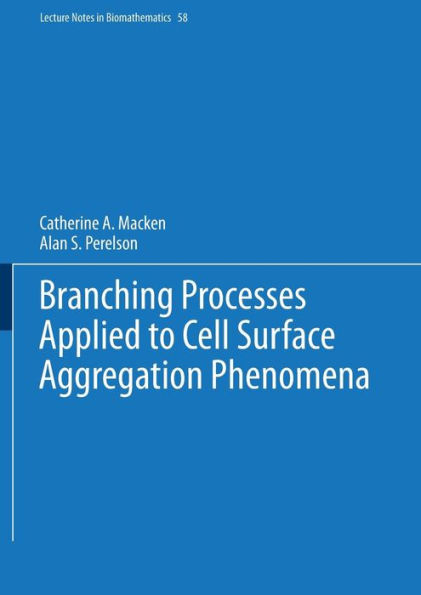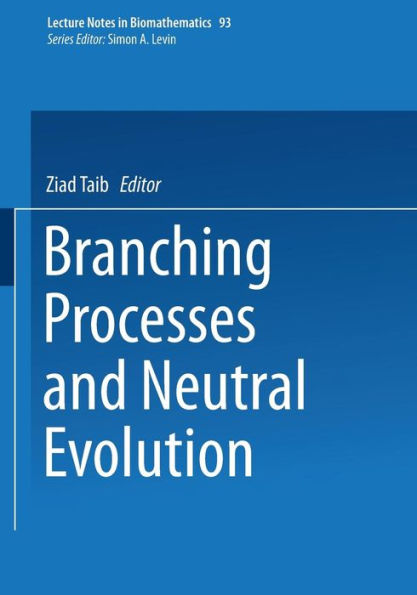Home
Branching Processes Applied to Cell Surface Aggregation Phenomena
Barnes and Noble
Loading Inventory...
Branching Processes Applied to Cell Surface Aggregation Phenomena
Current price: $54.99

Barnes and Noble
Branching Processes Applied to Cell Surface Aggregation Phenomena
Current price: $54.99
Loading Inventory...
Size: OS
*Product information may vary - to confirm product availability, pricing, shipping and return information please contact Barnes and Noble
Aggregation processes are studied within a number of different fields--c- loid chemistry, atmospheric physics, astrophysics, polymer science, and biology, to name only a few. Aggregation pro ces ses involve monomer units (e. g., biological cells, liquid or colloidal droplets, latex beads, molecules, or even stars) that join together to form polymers or aggregates. A quantitative theory of aggre- tion was first formulated in 1916 by Smoluchowski who proposed that the time e- lution of the aggregate size distribution is governed by the infinite system of differential equations: (1) K . . c. c. - c k = 1, 2, . . . k 1. J 1. J L i+j=k j=l where c is the concentration of k-mers, and aggregates are assumed to form by ir- k reversible condensation reactions [i-mer ] j-mer -+ (i+j)-mer]. When the kernel K . . can be represented by A + B(i+j) + Cij, with A, B, and C constant; and the in- 1. J itial condition is chosen to correspond to a monodisperse solution (i. e., c (0) = 1 0, k > 1), then the Smoluchowski equation can be co' a constant; and ck(O) solved exactly (Trubnikov, 1971; Drake, 1972; Ernst, Hendriks, and Ziff, 1982; Dongen and Ernst, 1983; Spouge, 1983; Ziff, 1984). For arbitrary K, the solution ij is not known and in some ca ses may not even exist.
Aggregation processes are studied within a number of different fields--c- loid chemistry, atmospheric physics, astrophysics, polymer science, and biology, to name only a few. Aggregation pro ces ses involve monomer units (e. g., biological cells, liquid or colloidal droplets, latex beads, molecules, or even stars) that join together to form polymers or aggregates. A quantitative theory of aggre- tion was first formulated in 1916 by Smoluchowski who proposed that the time e- lution of the aggregate size distribution is governed by the infinite system of differential equations: (1) K . . c. c. - c k = 1, 2, . . . k 1. J 1. J L i+j=k j=l where c is the concentration of k-mers, and aggregates are assumed to form by ir- k reversible condensation reactions [i-mer ] j-mer -+ (i+j)-mer]. When the kernel K . . can be represented by A + B(i+j) + Cij, with A, B, and C constant; and the in- 1. J itial condition is chosen to correspond to a monodisperse solution (i. e., c (0) = 1 0, k > 1), then the Smoluchowski equation can be co' a constant; and ck(O) solved exactly (Trubnikov, 1971; Drake, 1972; Ernst, Hendriks, and Ziff, 1982; Dongen and Ernst, 1983; Spouge, 1983; Ziff, 1984). For arbitrary K, the solution ij is not known and in some ca ses may not even exist.

















